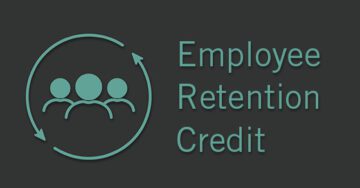While many economic indicators remain strong, the U.S. economy is still giving business owners plenty to think about. The nation’s gross domestic product unexpectedly contracted in the first quarter of 2022. Rising inflation is on everyone’s mind.


While many economic indicators remain strong, the U.S. economy is still giving business owners plenty to think about. The nation’s gross domestic product unexpectedly contracted in the first quarter of 2022. Rising inflation is on everyone’s mind.

A companywide income statement may be sufficient for lenders or other outsiders to evaluate your manufacturing company’s financial performance. But from management’s perspective, a “segmented” income statement can provide valuable insight into key performance drivers and possible improvement strategies.

A buy-sell agreement is a critical tool for owners of closely held manufacturing companies. It ensures an orderly ownership and management transition when an owner dies, becomes disabled, or otherwise leaves the company. And it creates a market for departing owners’ shares, providing owners and their families with liquidity and ensuring that the business stays in the family or other tight-knit ownership group.

First-year bonus depreciation typically creates a powerful tax incentive for eligible manufacturers to purchase qualified property needed for business reasons. These tax write-offs can benefit a manufacturer’s cash flow, but claiming them isn’t always the best decision. However, if your manufacturing company wants to take full advantage of the bonus depreciation, this is the year to do so.

Common sense dictates that every company, no matter how small, should carry various forms of business insurance. But that doesn’t mean you should pay unnecessarily high premiums just to retain the coverage you need. Here are five ways to better control your insurance costs without sacrificing the quality of your policies:

The IRS has announced additional relief for pass-through entities required to file Schedules K-2 and K-3 for the 2021 tax year. Certain domestic partnerships and S corporations won’t be required to file the schedules, which are intended to make it easier for partners and shareholders to find information related to “items of international tax relevance” that they need to file their own returns.

Managing and improving cash flow can help manufacturers survive tough times and prosper during better times. Every manufacturer is different, so the right cash flow strategies depend on your situation. Let’s take a look at several strategies that might be right for your manufacturing company.

The continued impact of the COVID-19 pandemic, unprecedented disruptions to the supply chain and a competitive business environment have created a challenging business environment. But manufacturers are facing another major obstacle: the ever-growing skills gap in the workforce. Here’s one possible solution to this.

Many of us have thought about how to best transfer our wealth to our heirs someday. It’s vital to understand the importance of your values when it comes to your wealth and sense of purpose in life. Here’s how to show your kids the connection between the two so they see the “why” behind decisions made with the family money.

The COVID-19 pandemic has had a dramatic impact on the way people interact and do business. And it’s likely that a number of the changes made to adapt to a social-distancing environment will become permanent.

Business owners, year end is officially here. It may even be over by the time you read this. (If so, Happy New Year!) In any case, the end of one year and the beginning of another is always an optimal time to look back on the preceding 12 calendar months and ask a deceptively simple question: How’d we do?

In the graphics arts industry, where drop shipping or sending direct mailers across several states can be a regular request, sales and use tax compliance is a complex issue that should be on your radar. If your business is not familiar with the new requirements, keep reading!

In Notice 2021-61, the IRS recently announced 2022 cost-of-living adjustments to dollar limits and thresholds for qualified retirement plans. Here are some highlights:

Every business should prepare an annual budget. Creating a comprehensive, realistic spending plan allows you to identify potential shortages of cash, possible constraints on your capacity to fulfill strategic objectives, and other threats. Whether you’ve already put together a 2022 budget or still need to get on that before year end, here are four red flags to watch out for:

On Monday, November 15, 2021, President Biden signed the Infrastructure Investment and Jobs Act (“IIJA”). The IIJA repealed the Employee Retention Credit for 4th Quarter of 2021.